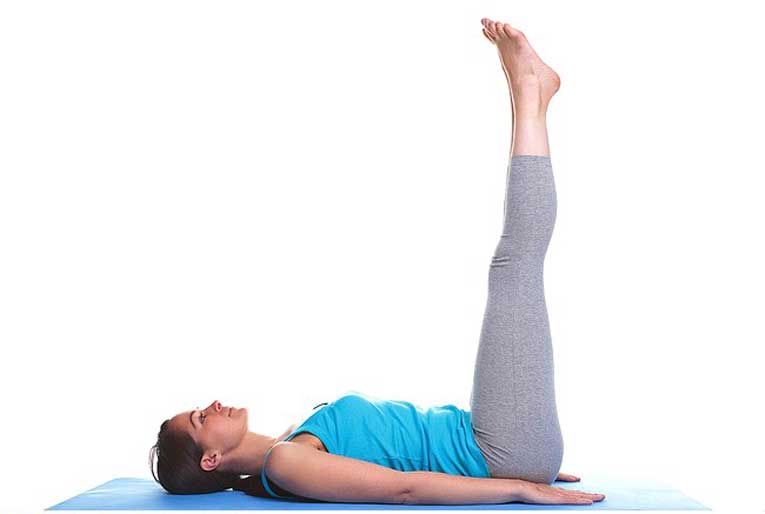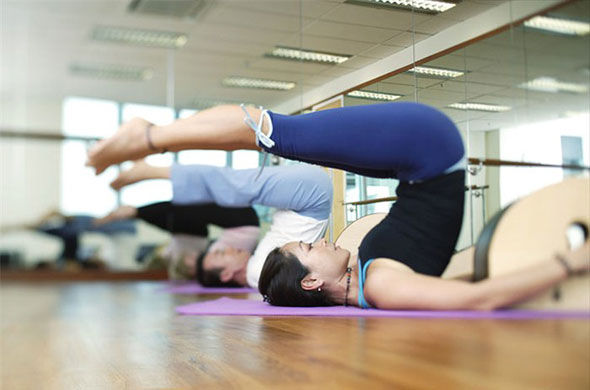Ardha Halasana means the ‘Half Plough Posture’. Proper practice of the Ardha Halsana will help you gain mastery over the Halasana posture which will be dealt in the following chapter.
The best thing about Ardha Halasana is that you practice this asana even on your bed before you get up in the morning.
Ardha Halasana is an ideal remedial exercise for people suffering from constipation. Besides toning up the body, removing laziness, it will also regulate proper bowel movements

Nomenclature
In Sanskrit the terms ‘Ardha’ means half, ‘Hala’ the traditional Indian plough and ‘Asana’ points to the specific yogic posture. Therefore, when a yogic practitioner assumes the final Ardha Halasana posture the figure will resembles a half plough.
Methodology
- Lie down on your practice mat.
- Stretch out your legs.
- See that your toes and heels are together respectively.
- Your toes must be pointing outwards.
- Relax the entire body.
- Similarly stretch out your hands on both your sides.
- The palms must be turned downwards.
- Remain in this position for about 60m seconds as you breathe normally.
- Press down the palms as you inhale.
- Even as you inhale slowly raise the right leg to the maximum height.
- The left leg must be kept flat on the ground.
- Keep on holding your right leg straight at the height you feel at ease till you inhale completely.
- Hold on to your breath for about five seconds or till you are comfortable.
- Exhale and simultaneously lower down the right leg till it reaches the floor. By that time you should be completing the exhalation process.
- Wait for some time when you should be holding out your breath.
- Gradually inhale deeply and simultaneously do the same act with the left leg.
- As you bring down the left leg after completing the act and exhalation, you would be completing one cycle.
- Do three cycles alternating both the legs.

The Second Stage of Ardha Halasana
- After you complete the three cycles, relax with normal breathing for about 10 seconds. Now commences the second stage of Ardha Halasana as you inhale.
- While you breathe in press down your palms.
- Raise both your legs without raising your hands or bending your knees.
- The legs should be raised to an angle of 30 degrees from the floor.
- Now attempt to lift the legs up to an angle of 90 degrees from the floor. Thus, your legs will be at a right angle with the ground.
- The back side of your head should be touching the ground.
- Your elbows and arm should be close to the trunk.
- Don’t use your shoulders to lift the legs.
- Your back must be as close to the floor as possible.
- Moreover, you shouldn’t be raising above the floor your head, and the trunk.
- The body above the hip joints should be touching the ground during the entire course of the posture.
- Fix the gaze on the toes.
- Don’t keep the toes pointed or stiff. Pointed toes creates tension and cramps on the toes and legs
- Complete the inhalation process and then hold on to your breath.
- Stay put in this posture till your body is at ease.
- This is the Ardha Halasana posture.
- Then lower the legs without bending your knees even as you exhale.
- During this legs lowering movement, you should be pressing down your palms on the ground.
- It is important that you pause when your legs are at an alignment of 60 degrees and 30 degrees vis-à-vis the ground.
- While raising and lowering the legs make the leg-muscles tense.
- Perform the legs lowering movement in a smooth gradual pace. Many have a tendency to abruptly drop the legs as they reach the ground. This is wrong!
- You shouldn’t be changing the positions of your neck, hands, palms, shoulders and neck.
- Repeat the exercise thrice at the initial stage in quick succession.
NOTE: However, at a subsequent stage when you gain complete control over the Ardha Halasana posture, you can either do it once or simply skip the Ardha Halasana posture and straightway move from Dhanurasana posture to the full Halasana posture. Actually, Ardha Halasana is the first step to correctly do the full Halasana posture.
Aadvantages
- Uterine problems are cured.
- Rectum ailments also get healed if you regularly practise Ardha Halasana.
- Ardha Halasana prevents hernia.
- Constipation and flatulence syndromes are cured.
- Menstrual disorders are corrected.
- Varicose veins are cured.
- Ardha Halasana prevents prolapse of abdominal organ.
- Abdominal muscle elasticity is built up.

1 comment
Pl guide whether Glaucoma patient practise Ardha Halasana